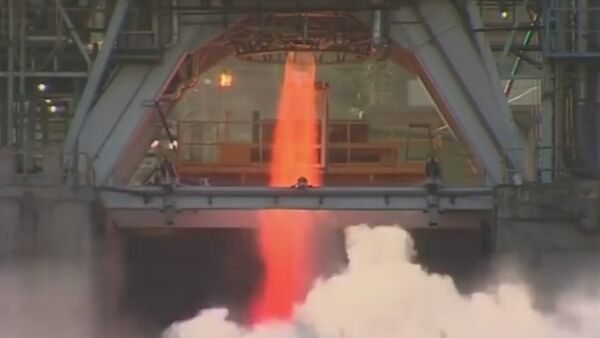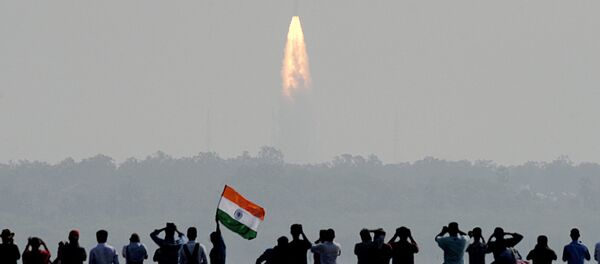New Delhi (Sputnik) — Following the successful launch of record number of satellite into the space, Indian Space Research Organization (ISRO) has successfully tested its largest cryogenic engine for a more than 10 minutes. The cryogenic stage designated as C25 was tested for a flight duration of 640 seconds at ISRO Propulsion Complex (IPRC) in Mahendragiri. C25 Stage had earlier been tested successfully for 50 seconds on January 25, 2017 to validate all the systems. "This Stage test is a significant milestone as it is the last in series of engine and stage development hot tests before the first development flight of GSLV MkIII," reads a statement released by ISRO.
The engine will power its mammoth Geosynchronous Satellite Launch Vehicle (GSLV) Mark III rocket capable of propelling a 4-ton class satellites into geo-synchronous orbit in April this year. "The GSLV MkIII vehicle integration activities are in progress at Sathis Dhawan Space Centre for its first development flight (GSLV MkIII-D1) targeted for April 2017. The vehicle consists of two solid strap-ons (S200) motors, one earth storable liquid core stage (L110) and the Cryogenic Upper Stage (C25)," ISRO said.
First attempt of ISRO's with Cryogenic engine for GSLV were unsuccessful in April 2001. After that, ISRO had tested 8 flights with Cryogenic engine; out of which 5 flew with Russian engine. The first successful test-flight using the indigenous engine happened in January 2014.
If India succeeds in April this year in launching 4 ton class satellites using its indigenous cryogenic engine, global competition satellite launching business will further intensify.





